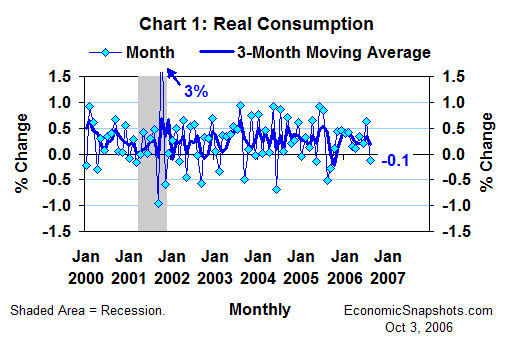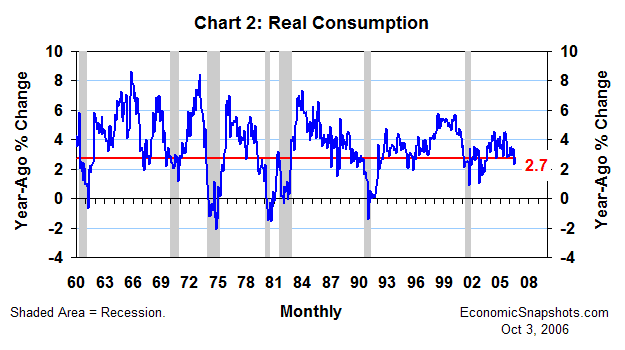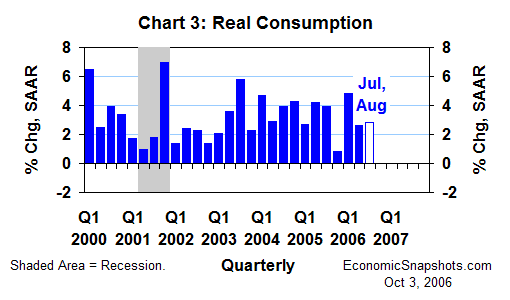
| Back to Index |
October 3, 2006 – According Friday’s data release, real U.S. consumption fell by 0.1% in August after rising by 0.5% in July (Chart 1). Both July’s above-trend gain and August’s slowing can be blamed on a combination of the chronic volatility in light vehicle sales and weather-driven fluctuations in household electricity demand.

For the three months through August, real consumption growth averaged 0.2% per month (a 2.2% annual rate). Although August’s decline exaggerates the case, the latest data do continue to show an exceptionally modest trend in real consumption growth.
Real consumption rose by 2.7% in the twelve months through August (Chart 2). That’s 0.7 percentage points below its long run (40-year) average gain of 3.4%.

For the last three months, this twelve-month consumption trend has been hovering close to rates that we would typically see in the early months of a recession. At this point, however, these data are also fully consistent with the more orderly transition to “sustainable” economic growth (the so-called “soft landing” scenario) anticipated by the FOMC. The key distinction between these two outcomes is that, during a recession, the trend in real consumption growth would typically continue to slow.
Compared to its Q2 average, real consumption rose at a 2.8% annual rate for the first two months of Q3 (Chart 3). That’s slightly better growth than its 2.6% gain for all of Q2, but qualitatively about the same.

The sharp declines in weekly retail gasoline prices during the month of September (and the implied boost to consumers’ real purchasing power) raise the possibility that September consumption growth might exceed its recent sluggish trend. To the extent that this proves to be the case, we could be in store for faster Q3 consumption growth than suggested by the data through August.
Suzanne Rizzo